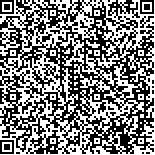下载中心
优秀审稿专家
优秀论文
相关链接
摘要

红树林是生长在热带和亚热带海岸潮间带、受到海水周期性浸淹的木本植物群落,被公认为是海陆边缘重要的蓝色碳汇,但由于其地处海岸带区域,受人类开发利用活动的影响严重。本文选择广西茅尾海红树林保护区为研究区,以无人机多光谱和激光雷达影像为数据源,利用支持向量机分类方法对红树林优势种类进行分类;提出了单木分层分区距离判别聚类分割方法,准确提取了红树林的单木结构信息;估算了研究区红树林地上生物量。得出以下结论:(1)综合利用无人机多光谱和激光雷达数据,对研究区红树林种间类型识别总体精度可达90.69%;(2)基于分层分区距离判别聚类方法能够较好的提取红树林单木结构特征,树高的提取精度优于冠幅;(3)构建了红树林高度、冠幅与地上生物量回归模型,其中桐花树生物量回归模型的决定系数R2最高,达0.83;(4)研究区内红树林地上生物量主要分布范围为1.24—3.6 kg/m2,其中无瓣海桑最高,老鼠簕最低。
Mangroves are special types of woody plants that grow exclusively in the intertidal zones of the tropics and the subtropics. With respect to environmental and ecological values, mangroves protect the shoreline from tides, winds, and storms and act as the first line of defense against extreme weather in coastal areas. Moreover, mangroves have a continuous carbon fixation capacity, which is much higher than those of peat swamp and coastal salt marsh. Mangroves are an important part of the earth carbon cycle system and considered an important blue carbon sink on the sea and land margin. However, mangrove habitat is threatened all over the world due to human development and utilization activities. Therefore, monitoring the spatial distribution of mangrove types and biomass will help guide policy-makers in taking effective utilization and protection measures.In this paper, on the basis of UAV multispectral images and LiDAR point cloud data, the support vector machine classification method is used for mangrove identification. Furthermore, mangrove species are distinguished according to different heights and distribution areas using the elevation information in the UAV LiDAR point cloud data. The structure characteristics of mangrove single wood are extracted by the point-cloud-based cluster segmentation method, and an estimation model of the tree height, canopy, and aboveground biomass obtained by LiDAR remote sensing is constructed, Finally, the aboveground biomass of mangrove in the study area is calculated, and its spatial distribution information is analyzed.The classification result of the species types of mangroves, which is combined with the multi spectrum and LiDAR point cloud data, can reach 90.69% in total accuracy. The kappa coefficient is 0.88. The accuracies of the algorithm in identifying single trees of Kandelia candel and Aegiceras corniculata are 86.71% and 60.21%, respectively. Among them, the middle errors of the heights of K. candel and A. corniculata are 0.36 and 0.18 m, respectively, and the crown width extraction precision of K. candel is higher than that of A. corniculata. The regression models of the aboveground biomass of K. candel and A. corniculata are constructed. The accuracy of the fusion model is the highest, and the respective decision coefficients (R2) are 0.678 and 0.832 for K. candel and A. corniculata.Mangroves are mostly planted artificially in the study area and distributed in a belt perpendicular to the dam: K. candel—Cyperus malaccensis Lam. and Acanthus ilicifolius L. —A. corniculata. The area of A. corniculata is the largest, which is approximately 8.91 hm2 and distributed on both sides of the tidal ditch far from the dam. The area of K. candel is 4.69 hm2, which is distributed in the area near the dam. C. malaccensis Lam. and A. ilicifolius L. are scattered in small areas among the different types of objects. The aboveground biomass of mangrove is calculated by the estimation model of above ground biomass. The aboveground biomass follows the order Sonneratia apetala > A. corniculata > C. malaccensis Lam. > K. candel > A. ilicifolius L. The distribution range of mangrove’s aboveground biomass is 1.24—3.6 kg/m2.

